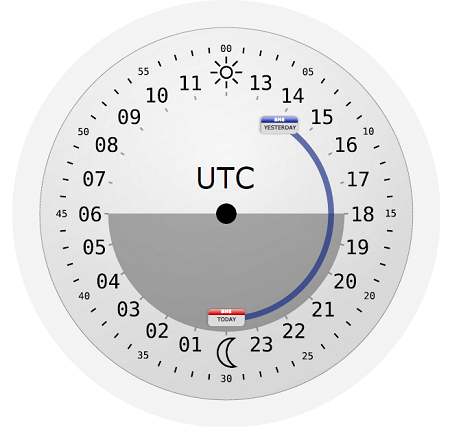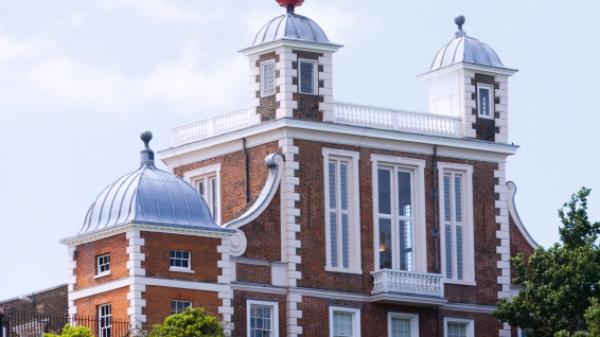What is the Full Form of UTCUTC: Universal Time Coordinated or Coordinated Universal TimeUTC stands for Universal Time Coordinated, the primary standard time on which clocks and time is regulated all over the earth. It is a fixed time zone and never observes Daylight Saving Time; it is five and a half hours behind New Delhi's time. This is an atomic clock that is combined with the earth's rotation, highly precise in nature, and a standard twenty-four hours' time. It got such a name as the world's timing centers agreed to keep their times synchronized, and it is commonly used across the world. 
HistoryUT or Universal Time is the twenty-four-hour standard time and not a time zone system that we use today to determine our timings worldwide; it was developed and taken into use at The International Meridian Conference in 1884. Later for the world's time zone, GMT was chosen. GMT stands for Greenwich Mean Time. In Greenwich, London, the transit circle at Royal Observatory was determined as the reference or starting line, also known as The Prime Meridian. 
The transit circle, which is still believed as the prime meridians' original starting line at 00 longitudes, is a part of the telescope's mechanics. The world later transferred from GMT (Greenwich Mean Time) to UTC (or Coordinated Universal Time) when The International Radio Consultative Committee structured the idea of UTC or Coordinated Universal Time in the year 1960 and was taken into use the following year. The name Coordinated Universal Time was adopted in the year 1967, officially. When the concept of leap seconds was brought into UTC, it was corrected numerous times to align with the actual earth's rotation until 1972. The GMT (Greenwich Mean Time), also termed Zulu Time was alike UT (Universal Time) until 1972. Today only a few countries in the African continents, Western Europe, along with the United Kingdom during the winter season and Iceland during the whole year, uses GMT as a time zone and not all other countries as a time standard. Also, the United Kingdom uses BST (British Summer Time) during sunlight saving time (DST), not GMT. Difference between GMT and UTCGMT (Greenwich Mean Time) is a time zone used by several countries of the African continent and European countries; this includes representation in both 24-hour and 12-hour formats. UTC (Coordinated Universal Time) is not a time zone; it is a standard time used around the whole world for time zones. It has no time formats as in GMT, and no country uses it as local time. The time-frequency aligning began worldwide on the first of January in the year 1960, and The Coordinated Universal Time was adopted on CCIR's recommendation 374, standard-frequency and time-signal emissions, in the year 1963 but along without the abbreviation in the year 1967. 
Mechanism of UTCCoordinated universal time works on a mechanism that divides the time into days according to the Gregorian calendar; Julian day numbers can also be used into hours as one day contains twenty-four hours, into minutes like an hour contains sixty minutes, into seconds which by number is sixty in a minute but maybe sixty-one or fifty-nine with occasional leap seconds. The scale of coordinated universal time or UTC shows days, hours, and minutes in variable states, but seconds are taken as constant, which includes all other smaller time units such as milliseconds, microseconds, etc., not every time the leap seconds are taken into account instead an announcement is made before taking these quantities at least six months before the decision about the same in the "Bulletin C" of The International Earth Rotation and Reference Systems Service. Sometimes the unpredictable pace of rotation of the earth possess difficulty in predicting the leap seconds in advance. Most of the time, all the UTC days contain only sixty seconds in a minute, somewhat exactly eighty-six thousand and four hundred SI seconds. UTC is within about one second of mean solar time at 00 longitudes. This adjustment is done because usually mean solar days are a bit longer than eighty-six thousand and four hundred SI seconds, so the last minutes of coordinated universal time are managed to have sixty-one seconds. This all accounts for a larger solar day than the previous year by a mean of two milliseconds each. Also, the last minutes of a coordinated universal time is allowed to have fifty-nine seconds, so to compensate for the earth's rotation being faster but not necessarily it. If the days are not of regular length, then it indicates that Julian's days do not work appropriately with the coordinated universal time. Since 1972, UTC calculation has been based on atomic seconds. One atomic second is equal to the atomic vibrations of the cesium atom. Further, the accumulated leap seconds, which are sixty-one or fifty-nine and not sixty exactly from the international atomic time, also referred to as TAI, is a coordinated time scale recording the actual time on the earth's surface. Additionally, to avoid complexity as discontinuities arise because of leap seconds when UTC or coordinated universal time changes from one function to another of TAI (International Atomic Time). The leap seconds turn out to be discontinuities of the day of irregular length; these days are supposed or expected to happen in March and September but actually happen at the end of June or December, which is also a secondary provision. Finally, DUT1 is formulated and managed to contain the discontinuities in UTC by taking the difference between universal time and coordinated universal time or UTC, DUT = UT-UTC, to be in the interval of -0.9s to +0.9s; this whole process is managed by The International Earth Rotation and Reference Systems Service (IERS). (Coordinated Universal Time or UTC is a network of precision atomic clocks. Whereas Universal Time is based on Earth's rotation.) Contradictions:There have been some confrontations over the frequent jumps in the coordinated universal time. In 1986, an independently researched proposal by Louis Essen and G.M.R Winkler suggested that the jump must be at most a second. Later the system was corrected accordingly, and the UTC and TAI seconds were decided to be maintained equally. Uses:Positive or negative offsets are the standards of expression for time zones around the world according to the time-zone list of coordinated universal time. Many uses of UTC include the use of UTC-12 by the westernmost time zone, as it is twelve hours behind; UTC+14 by the Eastern time zone, fourteen hours ahead of the actual UTC. Once UTC was adjusted from UTC-10 to UTC+14 by the Island nation of Kiribati so that it would be on the same day. The coordinated universal time is used as a standard in many internet services and WWW standards. The NTP (Network Time Protocol) was created to bring in synchronization among different clocks of a connected network of computers over the internet to ease the real-time transmission or transfer of data: joined to the UTC system. This UTC is considered the most precise and believed to be very helpful for experiments and civil works. The aviation department, Air traffic control department and weather forecasts department uses coordinated universal time or UTC for the proper estimation of time zones and to avoid chances of chaos. The International Space Station does use the coordinated universal time as the time standard. Radio services use UTC to set their contact so that many time zones can catch the frequencies. FutureDue to unfavorable climate changes leading to a slowdown of the earth's rotation, there is the requirement of positive leap seconds frequently as UTC does not change with different seasons and weathers like other local time zones. The present rate of change is approximate +1.7ms every century; later, it is estimated that leap seconds will be a problem. The earth's rotation has been unstable due to anthropogenic activities, and this is a threat to our time. It is estimated that the end of the twenty-first century will have 86,400.004s long LOD, which would require adjustment of leap seconds every two hundred and fifty days. Also, it is a part of speculation due to the increase in the rotation of the earth that we may need to take negative leap seconds for adjustment, which has never been used or taken into account in the past, not till 2025, but still, it's a concern. Maybe two leap seconds will be required to be adjusted in the twenty-second century as the only use of leap seconds in June and December will be insufficient to hold on to the difference of less than one second. Further, this may call upon the system to introduce the leap seconds in March and September.
Next TopicFull Form
|
 For Videos Join Our Youtube Channel: Join Now
For Videos Join Our Youtube Channel: Join Now
Feedback
- Send your Feedback to [email protected]
Help Others, Please Share










